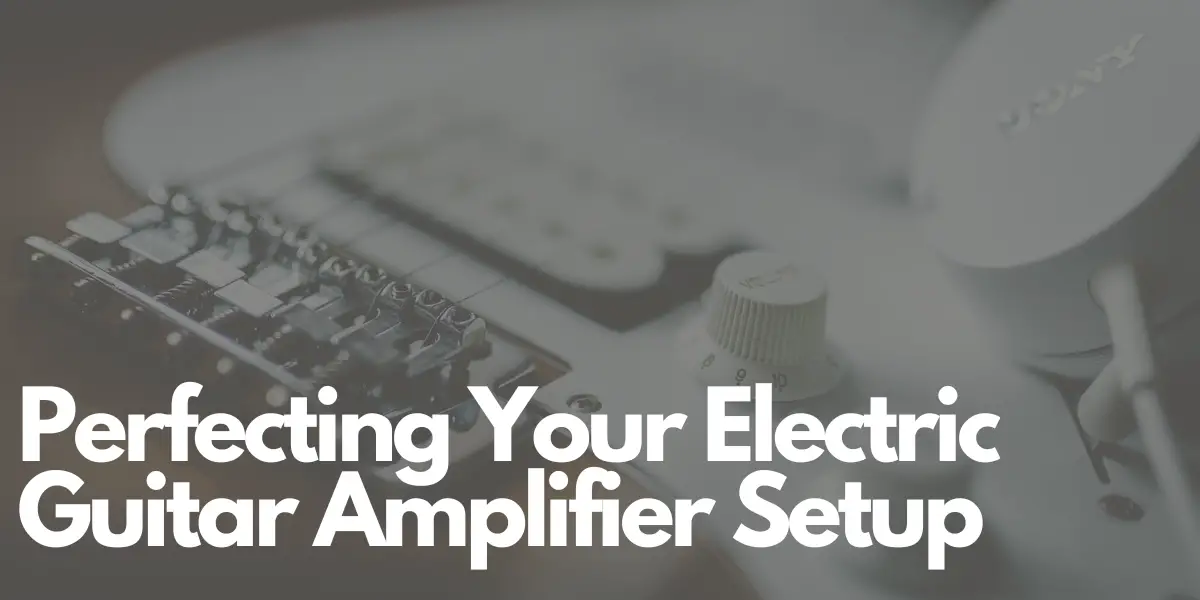Playing an electric guitar through an amplifier can open up a world of sonic possibilities, allowing you to express your musical creativity and style. Whether you’re a beginner or an experienced guitarist, getting the best sound from your electric guitar and amp setup is essential. In this article, we’ll take you through the steps to ensure you achieve the ultimate sound quality and tone from your equipment.
Choosing the Right Gear
Before you start the setup process, it’s crucial to have the right equipment that suits your musical style and preferences. Here are some factors to consider:
Guitar Type
The type of electric guitar you choose can significantly influence your tone. Whether it’s a Stratocaster, Les Paul, Telecaster, or another model, pick a guitar that matches your playing style and desired sound.
Amplifier Type
Amplifiers come in various types, including tube, solid-state, and modeling amps. Each type has its own tonal characteristics, so select an amplifier that complements your guitar and the genre you play.
Wattage
The wattage of your amplifier affects its volume and headroom. For home practice, a low-wattage amp may be sufficient, but larger gigs may require higher wattage. Consider your playing environment when choosing the right wattage.
Guitar Setup
Before connecting your guitar to the amplifier, ensure that your instrument is properly set up:
String Quality
Use high-quality strings that are suitable for your playing style. Fresh strings can make a significant difference in the tone of your guitar.
Action and Intonation
Adjust the guitar’s action (string height) and intonation (tuning accuracy along the fretboard). A well-set-up guitar ensures better playability and intonation.
Pickup Height
Fine-tune the pickup height for each pickup to find the right balance between output and clarity.
Tuning
Always keep your guitar in proper tuning for the best sound quality.
Amplifier Settings
Now, let’s dive into configuring your amplifier for optimal sound:
Clean Tone
Start with all tone controls (bass, mid, treble) at the 12 o’clock position and the gain set to the lowest level. This provides a clean, neutral tone as your starting point.
Volume
Begin with the master volume set at a low level to prevent excessive volume when you start playing.
Gain
Gradually increase the gain until you achieve the desired level of distortion or overdrive. Dial it back for clean tones and turn it up for crunchy or distorted tones.
Tone Controls
Experiment with adjusting the bass, midrange, and treble controls to shape your tone. Finding the right balance can make a significant difference in your sound.
Reverb
If your amplifier includes reverb, use it sparingly to add depth and dimension to your sound. Adjust the reverb level to your personal taste.
Effects and Pedals
To further enhance your sound, consider adding effects pedals to your setup. Common pedals include distortion, delay, chorus, and wah-wah. Experiment with different combinations and settings to create unique and captivating tones that suit your style.
Room Acoustics
Remember that the room you’re playing in can impact your sound. Rooms with reflective surfaces may result in pronounced reflections and reverberation. Experiment with your amplifier’s placement to find the best position in the room for optimal sound projection.
Ear Protection
Protect your hearing by using earplugs or musician’s earplugs, especially when playing at high volumes or in loud environments. Preserving your hearing is crucial for your long-term musical journey.
Regular Maintenance
Lastly, don’t forget to maintain your guitar and amplifier. Regularly clean your instruments, change strings when needed, and periodically check for loose components or electronic issues. Proper maintenance ensures that your equipment continues to perform at its best.
Setting up your electric guitar and amplifier for the ultimate sound experience is a rewarding process that allows you to unlock your instrument’s full potential. With experimentation and a keen ear, you can find your unique tone, whether you’re aiming for a clean, jazzy sound or a roaring rock distortion. Taking the time to refine your setup will enhance your playing and musical enjoyment.
Author: Mike P
Hi! My name is Mike! I’ve been an apartment producer/musician for 10+ years. I’ve played in punk bands, released EDM tunes on Beatport and iTunes, and have a semi-successful stock music portfolio. Read more…


